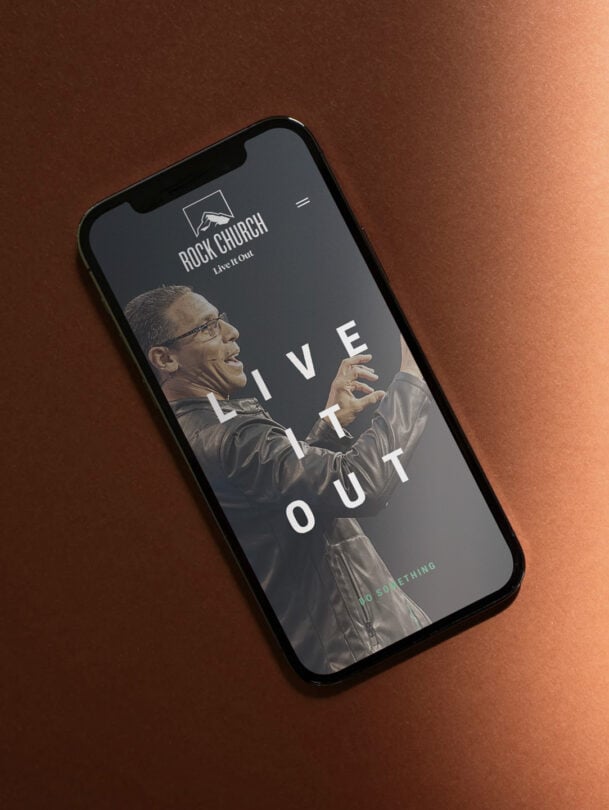
Mastering Brand Implementation: Insights and Tips for Success
average read time: 6 MIN
Articles
July 13, 2023
Rebranding is an exciting time for any business, but it can also be a complex and challenging process. While the brand development process is essential, developing a well-thought-out brand implementation plan is just as important. But what does success look like? In this article, we’ll explore four essential elements to master brand implementation: treating it as its own project, leading with belief and behavior, using brand champions to drive adoption, and deciding whether to launch all at once or incrementally. With these elements in mind, you can create a comprehensive plan that ensures your new brand is embraced by your customers, employees, and stakeholders alike.
1. TREAT BRAND ROLLOUT AND IMPLEMENTATION AS ITS OWN PROJECT.
Don’t be tempted to lump the rollout into the brand development process. Implementing the new brand requires comprehensive planning, so treating it as its own project is best. The more methodically you approach the rollout, the more control you will have over the adoption and success of the new brand.
It is essential to start building your rollout plan as early as possible. A great place to begin is by mapping out all items that need to be updated with the new brand.
Identify how business-critical it is to do each item, the time requirement, and if the item should be done in-house or by a third-party vendor. Crafting a clearly defined budget at the start of the project help to provide clarity on the objectives that can be accomplished. Depending on the size and scope of your business, you may need to spread out the rollout across multiple fiscal years. This allows you to tap into capex and operational budget cycles that will reduce the impact on your marketing budgets.
Create a rollout prioritization list. In an ideal world, you can phase everything in the most linear fashion. But the reality of budget, resource, and product availability may drive a different outcome. While everything that carries your logo will eventually need to be updated, it is important to identify the items that drive the most market impact to be crafted first.
By identifying the right elements to complete, we can work backward to develop a timeline to create each item. Reverse engineer each step of the process and how long it will take to complete—group the items into sprints, with roles and responsibilities assigned to each team member. Finally, set a regular status report to track progress. This extra layer of project management will ensure transparency, accountability, and, ultimately, an efficient rollout.
2. LEAD WITH BELIEF AND BEHAVIOR, NOT JUST A NEW LOGO OR TAGLINE
Successful rebranding initiatives are more than just rolling out a new logo or tagline. Suppose you add a new logo while ignoring some of the deeper foundational issues. In that case, the result will continue to deliver the same value in the same way and will keep you in the same cycle of spending marketing dollars and not seeing improved results. We define behaviors as an organization’s actions to live out its brand belief.
Whether you recognize them or not, every organization has behaviors – how they communicate (explicitly and implicitly) with their customers, employees, partners, and community. These behaviors encompass every aspect of your business, including marketing & communications, company culture, product & service development, and impact.
As part of our process at BLVR®, we hold a brand behaviors workshop with our clients. We analyze your existing company behaviors through the lens of the new brand to see which ones hold up and where the opportunity for improvement might lie.
3. USE BRAND CHAMPIONS TO DRIVE THE ADOPTION OF YOUR REBRANDING PROJECT.
When considering a brand rollout plan, focusing on external stakeholders like customers or shareholders is natural. While these audiences are critical, gaining the support of internal stakeholders like employees, investors, and owners is critical as they will be the team responsible for representing and amplifying the new brand. An effective way to build internal support is to convert build brand champions via a brand ambassador group. You’ll want to work with cross-functional work group leaders who can push the new brand from the top down. You also want to focus on non-traditional influencers within the company who can push support from the bottom up. Finally, consider if external vendors like key clients or important distributors should be part of the ambassador group. These champions can be kept in the loop of the branding process; they can share feedback and show support to the broader organization.
Train your ambassadors on the rebranding story (Why are you doing it, what is the new brand, how will it add value to the company). Have them help educate their teams on the rebrand and provide them with a comprehensive FAQ so they can address questions from the employees consistently and helpfully. A clear vote of confidence from them will encourage employees to get behind the rebrand and embrace it fully.
4. BRAND ROLLOUTS – LAUNCH AT ONCE? OR LAUNCH INCREMENTALLY?
There can be pros and cons to launching your brand in one consolidated effort or, conversely, in incremental phasing.
Relaunching in one swift move maximizes excitement around your brand, creating a newsworthy moment to connect with audiences, stakeholders, and employees. It delivers an element of surprise and a competitive advantage in the market. It grows your brand value by allowing you to control the brand narrative consistently across all channels. Although, launching in one ta-da moment can have its drawbacks. All elements of the brand rollout have to be ready at the same time, this can be challenging if you have issues like excess stock sitting with retailers, and it requires a large amount of financial investment upfront.
A phased rollout, which is one we normally recommend, ensures that the new brand can be launched in manageable increments while minimizing the impact on the bottom line. It reduces the operational risk of requiring a new brand system rolled out across a vast product portfolio. It also reduces the strain on the marketing team to meet the potentially excessive demands of one key deadline. Plus, it gives customers and employees time to adjust to the new brand in phases. But it can come with some challenges – Competitors potentially have time to pivot to your rebrand, minimizing their competitive risk. It can breed confusion or resentment from key audiences as they aren’t sure ‘who you are anymore,’ and the buzzworthy opportunity to create a singular, memorable moment of change within the brand is lost.
There’s no right or wrong approach. We recommend weighing the pros and cons before deciding which approach will bring the most value to the organization. Ensure this process is done early enough to manage expectations within the business.
Revamping Your Brand Checklist
Want to know the keys to change management success for your next rebrand? Download our checklist with a step-by-step framework to ensure a smooth transition and maximize the chances of achieving your rebranding goals.

Rolling out a new brand is about more than just changing your company’s logo or redesigning your website. It’s about crafting a new identity that resonates with your target audience and sets you apart from your competitors. It’s about creating a compelling story communicating your values, mission, and vision. It’s about rallying your team around a shared purpose and empowering them to deliver exceptional customer experiences.
The success of your brand implementation hinges on your ability to stay true to your brand strategy and execute your rollout plan precisely. It requires a concerted effort from everyone in your organization to ensure that your brand is consistently represented across all touchpoints. This includes marketing materials, social media channels, customer service interactions, and physical spaces.
But the rewards are well worth the effort. A successful brand implementation can fuel growth, attract new talent, and strengthen your reputation. It can establish your brand as a leader in your industry and inspire customer loyalty. And it can empower your team to innovate, collaborate, and push the boundaries of what’s possible.
So, as you embark on your brand implementation journey, remember to stay focused on your goals and stay true to your brand identity. Use the insights and tips outlined in this article to guide your strategy, and don’t be afraid to seek help from experts if you need it. With the right mindset, plan, and team, you can master brand implementation and take your organization to new heights of success.
About the author(s)
01
© BLVR
SD / CA




